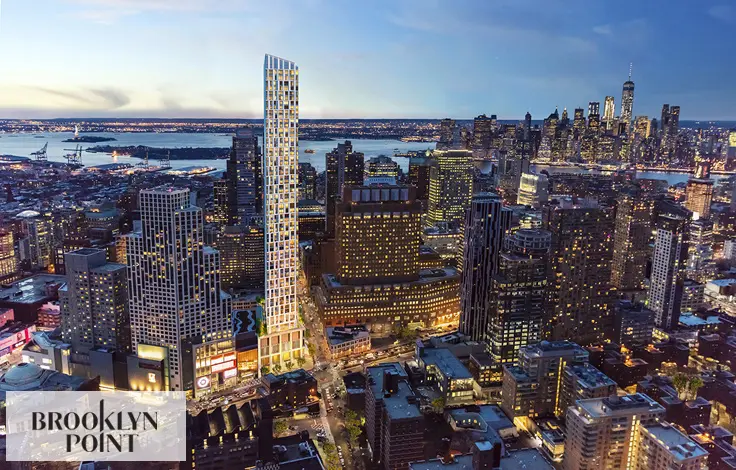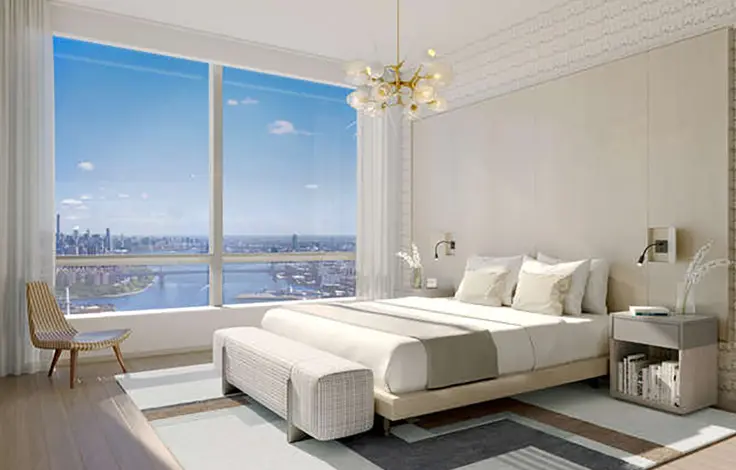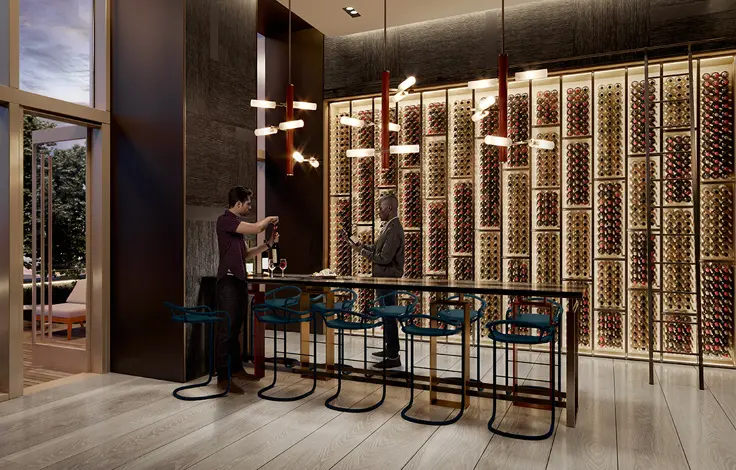 Carter Horsley
Carter HorsleyDec 23, 2011
Carter's Review
This is one of the eight 28-story apartment buildings that were built as part of the Lincoln Towers residential component of the vast Lincoln Square Urban Renewal Project that also created the Lincoln Center for the Performing Arts and a Manhattan campus for Fordham University.More than 7,000 low-income families and about 800 businesses were displaced on the vast redevelopment site, once known as San Juan Hill, and before their demolition the tenement buildings were vacated and provided many of the sets for the movie version of the plan "West Side Story."The Lincoln Towers enclave contains a total of 3,897 apartments of which 484 are in this building that was completed in 1961 and converted to a cooperative in 1987.The residential towers, all designed by S. J. Kessler & Sons, are located on 19 percent of a 36-acre site that is divided by West End Avenue and runs from 66th to 70th Streets and from Amsterdam Avenue to Freedom Place that was named to honor Michael Schwerner, Andrew Goodman and James Cheney who were civil rights workers killed near Meriden, Mississippi in 1964. The west side of Freedom Place is the eastern boundary of the former New York Central rail yards along the Hudson River that developer Donald Trump is developing as Riverside South, a huge, high-rise apartment enclave.Much of the opposition to Trump's mammoth project, which finally went into construction in 1997, came from residents of Lincoln Towers, many of whose views of the Hudson River were threatened by the proposed new towers. On the other hand, Trump's project is replacing long abandoned and derelict rail yards with a coordinated architectural ensemble modeled in part after the great towers of Central Park West and which are likely to result in further gentrification of the area.Writing about Lincoln Towers in their book, "New York 1960, Architecture and Urbanism Between The Second World War And The Bicentennial," (The Monacelli Press, 1995), authors Robert A. M. Stern, Thomas Mellins and David Fishman wrote that:The towers, indeed, are very long slabs: in his book, "Upper West Story, A History And Guide," (Abbeville Press, 1989), Peter Salwen describes "the great gray mass of Lincoln Towers, apartment mega-blocks on a scale immense enough to satisfy a Mussolini." The Mussolini here, of course, was none other than the legendary Robert Moses, a visionary planner who attained incredible political power and was the most prodigious builder in the city's history albeit not the most aesthetically inspired. In his unauthorized biography of Robert Moses, "The Power Broker, Robert Moses and the Fall of New York," (Alfred A. Knopf, 1974), Robert A. Caro maintained that "Moses was not making even a pretense of creating new homes for the families displaced." The largest slum clearance project of its kind in the nation when it was built, Lincoln Square (including the performing arts center) has radically transformed the Upper West Side, but that transformation has taken a long time. It must be ruled a success economically even if, aesthetically, it is a tremendous disappointment. Only in the 1990's, however, has the Lincoln Center district really come into its own as a very desirable "luxury" location and the more recent projects have begun to dwarf, at least vertically, this otherwise monumentally large complex whose open spaces will undoubtedly become more and more appreciated.

- Co-op built in 1959
- 2 apartments currently for sale ($760K to $999K)
- Located in Lincoln Center
- 543 total apartments 543 total apartments
- 10 recent sales ($487K to $2.5M)
- Doorman
- Pets Allowed






 6sqft delivers the latest on real estate, architecture, and design, straight from New York City.
6sqft delivers the latest on real estate, architecture, and design, straight from New York City.
